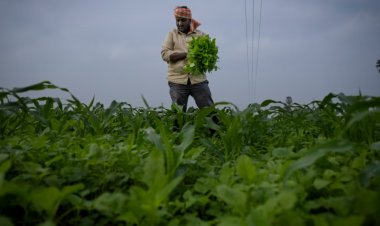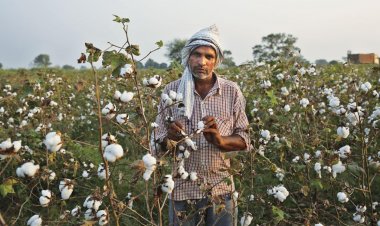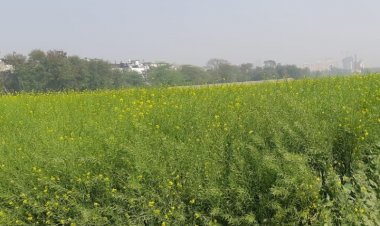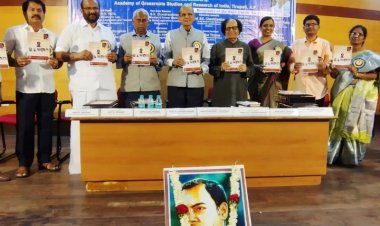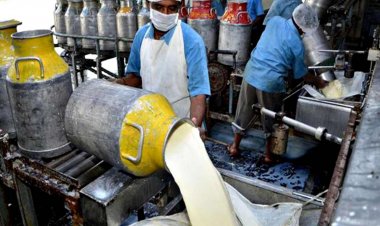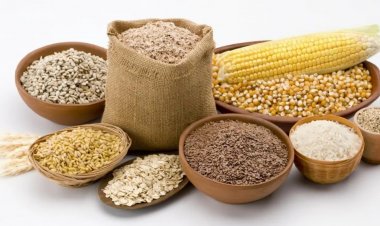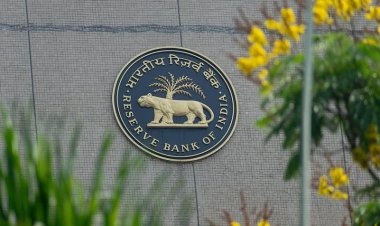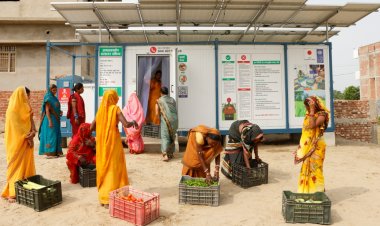Agriculture is turning into a formal sector
The agriculture sector of the country is going through a slow change. It is the largest private sector in the economy. According to various government figures, small, medium and large farmers who are owners of 12-14 crore landholdings run this private sector. The policy of the government is to turn various sectors of the economy from informal to formal. This has gathered pace subsequent to the implementation of the Goods and Services Tax (GST) and demonetization. While small, informal businesses are shrinking, the scope of big, formal businesses is widening. But this can be seen in a somewhat different form in agriculture. Thanks to the small size of landholdings and the limited employment opportunities in the manufacturing and services sectors, the number of people dependent on agriculture is not going to see a major change anytime soon. The change that is creeping in is that the role of government is gradually diminishing and that of the private sector is increasing.
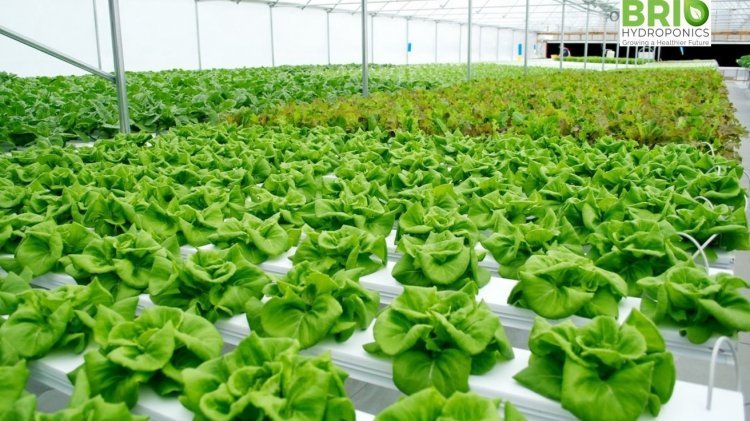
The agriculture sector of the country is going through a slow change. It is the largest private sector in the economy. According to various government figures, small, medium and large farmers who are owners of 12-14 crore landholdings run this private sector. The policy of the government is to turn various sectors of the economy from informal to formal. This has gathered pace subsequent to the implementation of the Goods and Services Tax (GST) and demonetization. While small, informal businesses are shrinking, the scope of big, formal businesses is widening. But this can be seen in a somewhat different form in agriculture. Thanks to the small size of landholdings and the limited employment opportunities in the manufacturing and services sectors, the number of people dependent on agriculture is not going to see a major change anytime soon. The change that is creeping in is that the role of government is gradually diminishing and that of the private sector is increasing.
To begin with, let us take infrastructural facilities. The development of irrigation facilities is the first prerequisite for improving the farmers’ economic condition. No major irrigation project has been undertaken over the past few years. However, there has been some work on increasing the efficiency of the water used for irrigation. In other words, the governments have reduced investments in irrigation facilities significantly. As far as “more crop per drop” is concerned, it is an expensive option. Drip or sprinkler irrigation facilities are used in this with the help of new technology. The Union and state governments provide subsidies for these facilities in order to reduce the economic burden on the farmers. That is, the government is outsourcing the job to the private sector rather than doing it on its own. Besides, the private industry of irrigation equipment is growing up fast.
Agricultural research is another significant aspect required for the development of agriculture. But over the last several years, the amount allocated for agricultural research has not witnessed the growth that was expected. The budget for the Indian Council of Agricultural Research (ICAR) for the current financial year was the same as that for last year. Most of it goes to salaries and other expenditures, leaving little to be spent on research resources. Given this situation, new research is coming from the corporate sector. Owing to this, seeds of new varieties will come from the private sector and add to the farmers’ production costs. The share of the private sector has gone up much in seeds of vegetables to cotton, maize, oilseeds and several other crops.
The normal seed species of the major crops of wheat and paddy are still coming from the public sector. But it is the private sector that dominates in hybrid paddy varieties. The hybrid varieties of the remaining crops are also coming from the private sector. That is, the government has gradually withdrawn itself from here, making farmers pay more for seeds of superior quality. And it is through this that a formal seed industry is coming up. The coverage of seed availability through the National Seeds Corporation (NSC), State Farms Corporation of India, state seed corporations and government universities is reducing. It will do so even faster in the future. It is true that governments are running seed subsidy schemes. Many a time they provide seed kits. But questions are raised frequently regarding the quality of seeds given through this route. Also, the role of public institutions is diminishing in this process. It was in the Seventies that the private sector started multiplying and selling the seeds of crops like cotton. Subsequently, in the Eighties and Nineties, these companies began producing seeds through their own breeding programmes and created a market. And even multinational companies (MNCs) entered this market about 25 years ago. Today the turnover of the country’s private-sector seed companies has reached about Rs 15,000 crore.
Marketing infrastructure was considered significant in the development of agriculture and increasing farmers’ income. In the Seventies and Eighties, the governments acted fast on mandis and public storage facilities across the country. But now the government does not seem to consider such infrastructure strategically important for agriculture and does not appear to be keen on any major allocation. However, it does want to appear working here indirectly. The government has created a Rs 1-lakh-crore National Agriculture Infrastructure Fund for this. But it is not a fund that would be used directly for infrastructural facilities. It provides subsidized loans. That is, instead of building infrastructure on its own, the government will provide concessional loans to institutions for this purpose. Therefore, one does not expect any large-scale infrastructure under this as the loan limit is not too huge. But the government has signed long-term agreements with the private sector under which large private-sector companies have developed modern storage facilities and are constantly increasing capacity. That is, the formal sector is expanding in this sphere, too.
The application of technology is rapidly increasing in agriculture. It is fast making a place for itself in every sector — from the crop production process to gathering necessary inputs, availability of financial resources, marketing, the access of products to the national and global markets, making essential crop nutrients available, etc. Precision farming is getting popular in the developed countries of the world. It is proving helpful in obtaining a host of results ranging from reducing costs to ergonomics and better yield and quality.
Our country is also working in this direction but most of the work is taking place in the private sector. True, the government institutes have started projects like the Internet of Things (IoT) and using the IT platform but they will take some time to produce results. It will be too soon to predict how and when these projects will be put to practical use. On the other hand, private-sector companies, especially domestic companies and large agri MNCs that are expanding fast in the Indian agriculture sector, are working in this direction with speed. Their work will soon become visible. This is why the government has signed 10-odd agreements with domestic companies and MNCs for a host of projects like AgriStack and Farmers’ Id. It gives a sense of foreboding that the role of the government and public institutions will decrease while that of the private sector will increase.
The exercise of creating a formal sector is going on even at the farmers' level. The government is emphasizing the creation of Farmer Producer Organizations (FPOs). It has set a target of creating 10,000 FPOs. Also, there is a focus on extending the ambit of the cooperatives and there are plans to turn primary cooperatives into multi-functional societies. It is important, however, to review how beneficial the FPO and cooperatives options are for the farmers.
As far as the role of agriculture in the economy is concerned, it has been good over the last three years. During the Covid times, while higher agricultural production supported the economy, it also made the availability of foodgrains possible for government schemes. It is due to the good agriculture growth figures that the economy is growing at about 7 per cent in the current year. Agriculture has grown at more than 4.5 per cent in the first six months of the current financial year. Normal monsoons for four continuous years have made a big contribution to this. The government had to go for a steep hike in fertilizer subsidies due to the surge in oil and fertilizer prices in the global market. This is expected to keep fertilizer subsidies at more than Rs 2.25 lakh crore in the current financial year. But at the same time, agriculture exports exceeded $50bn in the last financial year (2021-22). Also, it is due to the favourably placed agricultural production that India has succeeded in curbing inflation. However, the country had to spend $20bn on edible-oil imports, which may be seen as laxity on the policy front.
What is most significant amidst all this is that although the government seems to be taking several initiatives in agriculture, it has no clear policy agenda for the sector. A country like the US comes up with a new agricultural policy every five years, but we are still relying on ad hoc-ism. It is imperative to come up with a comprehensive agricultural policy, which takes into account all aspects from production to marketing, has clarity on export-import issues related to the domestic and global markets, delineates clearly everything from seeds to technology to financial facilities and offers a perspective on aspects ranging from land ownership holding records to digitalization that may establish the farmers as financially more viable units. There is also the need to talk about reforms, but it seems that the government does not want to throw off the policy inertia that has stemmed from the protest against the three new farm laws brought about in 2020 and their subsequent repeal. Hence the government is moving ahead slowly on its policy of limiting its role. This may be considered to be the route to turning agriculture into a formal sector.
There is also a question pertaining to the farmer representative organizations, the largest stakeholders in the agriculture sector, and their leadership. Their thought process and mode of working give a sense that they are still stuck with issues like MSP and loan waivers. Their understanding does not seem to be very clear with respect to the major transformation that agriculture is undergoing. It would be better if the farmer organizations and their officials understood this transformation and made their stand clear on this front, too, or ensured their participation in policy decisions, bearing the farmers’ interests in mind. This is possible only when dialogue starts between the government and the farmer representatives, which is not on the horizon at present. Transformation is taking place and will continue to do so, but the farmers’ interests can be protected in this transformation only if all stakeholders participate in it.



 Join the RuralVoice whatsapp group
Join the RuralVoice whatsapp group

















